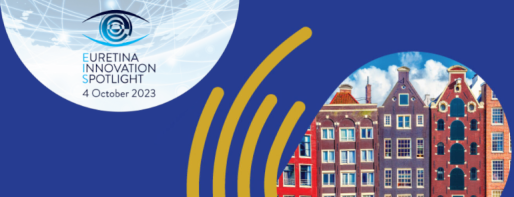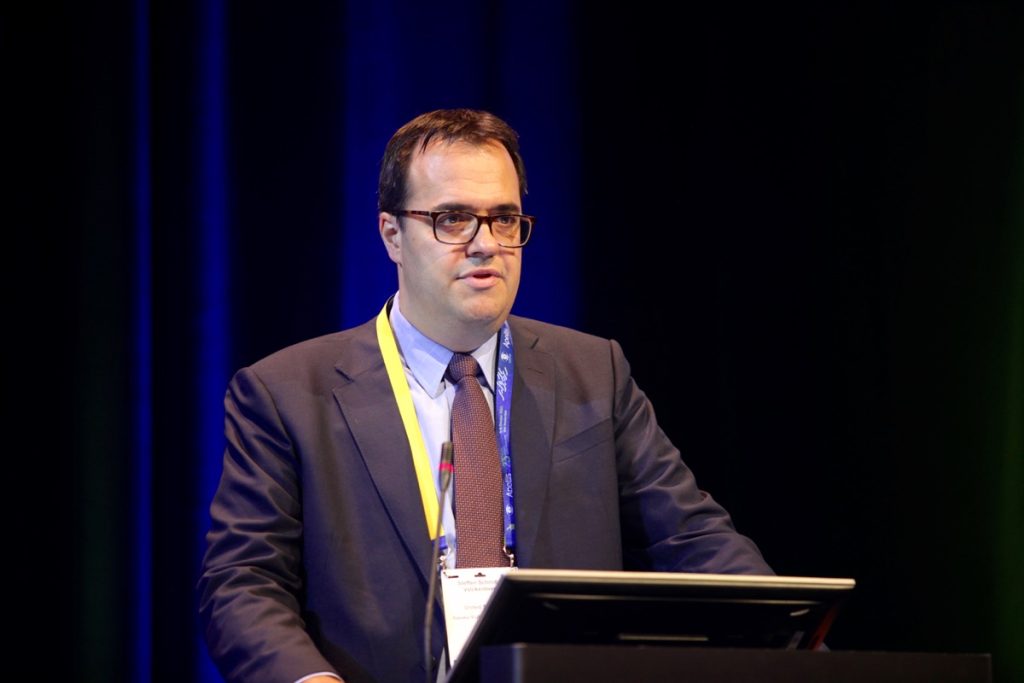Discussing the impact of genetic factors on AMD characteristics and natural history, Steffen Schmitz-Valckenberg (Germany) concluded that according to current knowledge, genetics appears to have a more relevant association with the initial manifestation of AMD and in the early course of the disease as compared to later stages where unspecific degenerative mechanisms may play a larger role.
Evidence also indicates that higher genetic risk is associated with earlier onset of late stage AMD, and early data suggests there are relevant differences in AMD manifestations between genetic risk factors located on chromosome 1 versus chromosome 10.
Dr Giuseppe Querques (Italy) reviewed studies that used structural OCT and OCT angiography to identify biomarkers for predicting activation of type 1 and type 3 nonexudative macular neovascularization (MNV). The research showed that non-exudative type 1 MNV, especially when fast-growing, nascent T3 MNV, and type 3 MNV at the site of nascent geographic atrophy (GA) should be considered as high risk for progression to exudative neovascular AMD.
The availability of treatments for slowing progression of GA secondary to AMD raises interest in understanding whether GA lesion phenotype and progression rate differ depending on ethnicity. In that regard, Dr Gemmy Cheung (Singapore) presented findings from a retrospective cohort study that found differences in the clinical characteristics and progression of GA comparing Asians from Singapore and Thailand with a US population of non-Asians. The research also showed the ethnicity-related differences were most notable among eyes with very small baseline lesions and those without drusen background. Dr Cheung noted that further studies are needed, including those focusing on other Asian populations
The last two presentations in the session centred on treatment for AMD. Focusing on GA, Dr Frank Holz (Germany) discussed therapeutic approaches for slowing progression, preventing GA development, and improving visual function lost after foveal involvement. Now two intravitreal modalities targeting the complement system are commercially available in the United States, and many other investigational agents representing a variety of mechanisms of action are being evaluated in preclinical and clinical studies.
Dr Holz also addressed patient selection for using the complement inhibitors and proposed a role for artificial intelligence helping with treatment decisions. He briefly mentioned strategies for improving vision, but noted that there are as yet no validated endpoints for studies investigating treatments for preventing GA.
Dr Arshad M Khanani (United States) reviewed investigational treatments for neovascular AMD that have advanced into phase 2 or phase 3 clinical trials. Overall, these agents are aiming to address two unmet needs in the treatment of neovascular AMD, ie, to provide better vision outcomes or to increase durability. Sozinibercept, an inhibitor of VEGF-C and VEGF-D, is being investigated in combination with existing anti-VEGF-A treatments to see if the dual approach can lead to better vision. As discussed by Dr Khanani, multiple drugs representing either tyrosine kinase inhibitors or gene therapy approaches are being developed for their potential to provide sustained disease control.
This session is available to registered attendees on demand.


